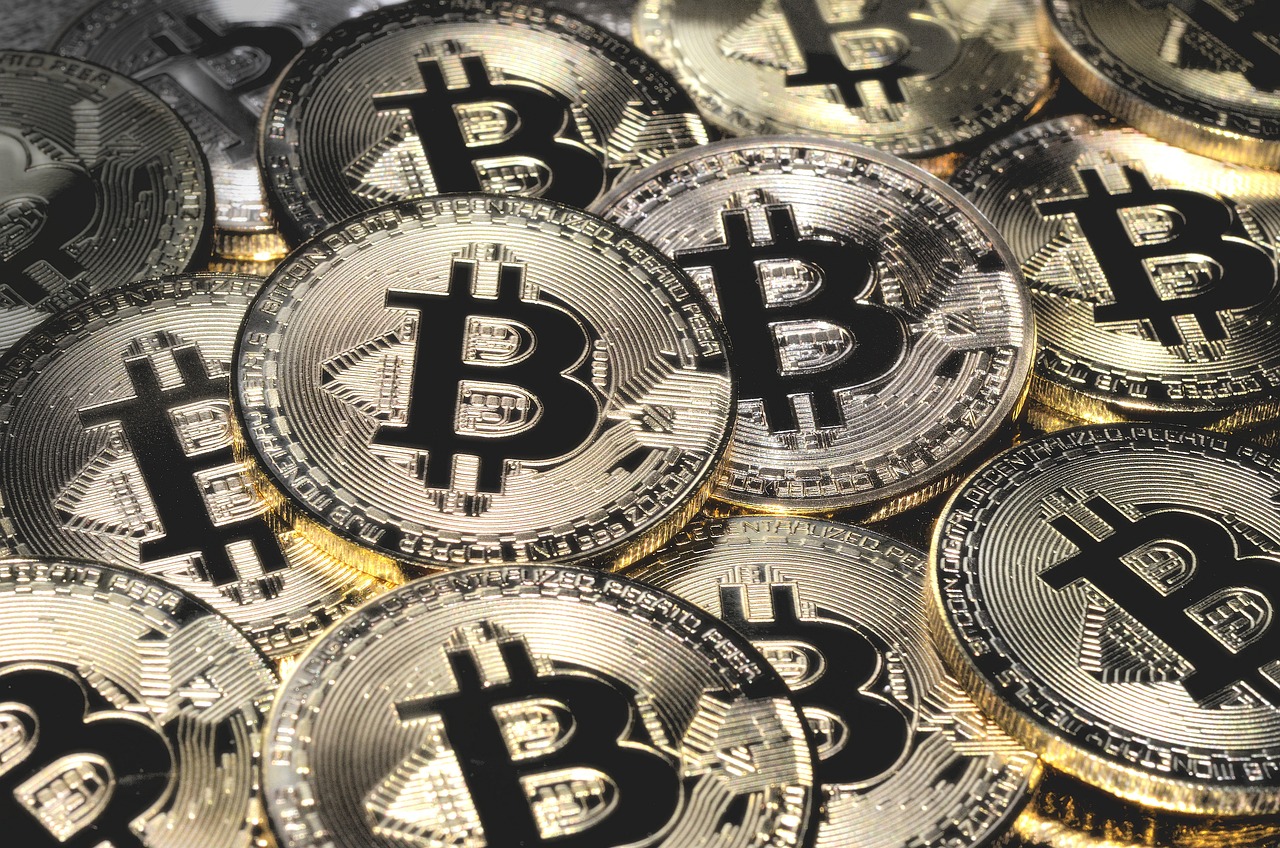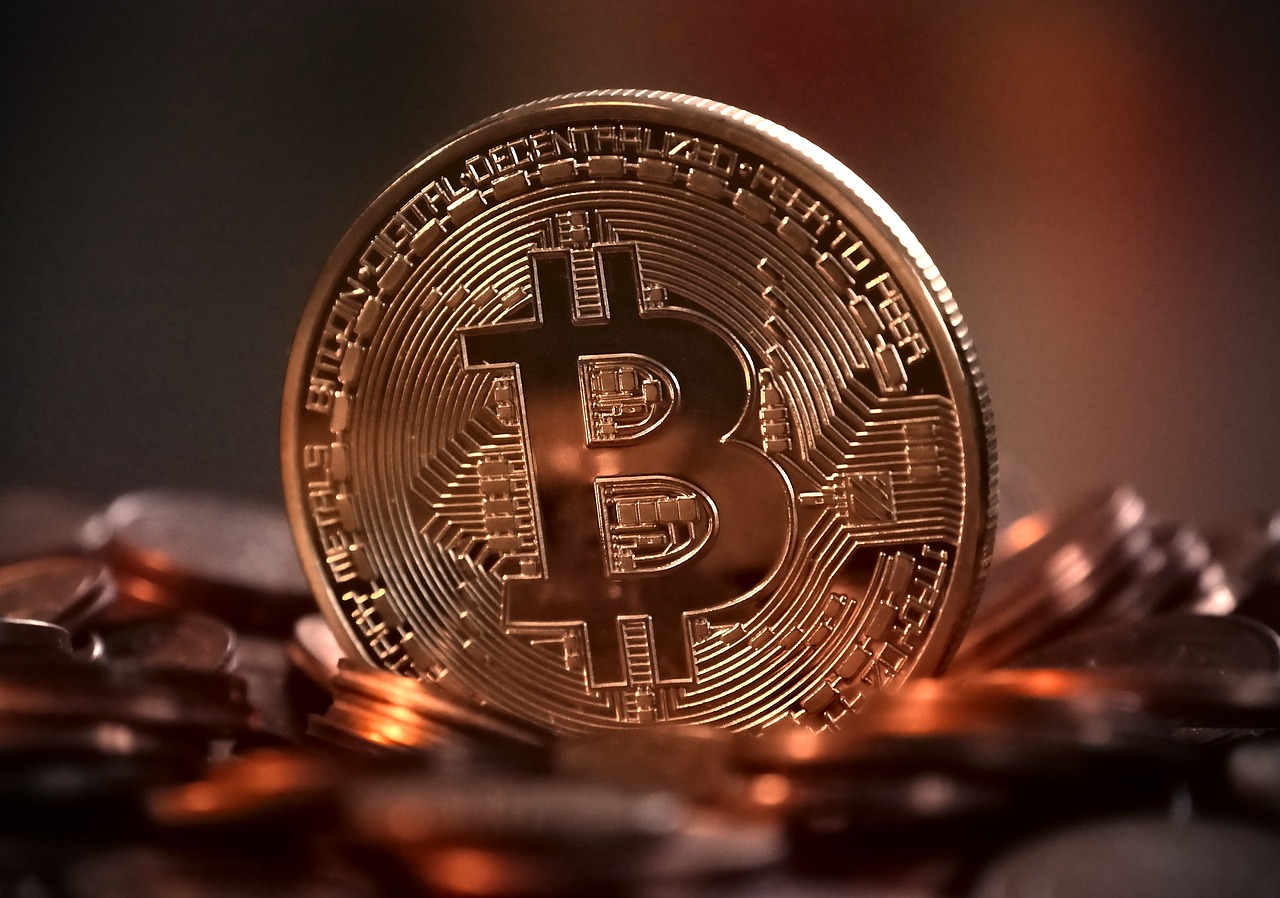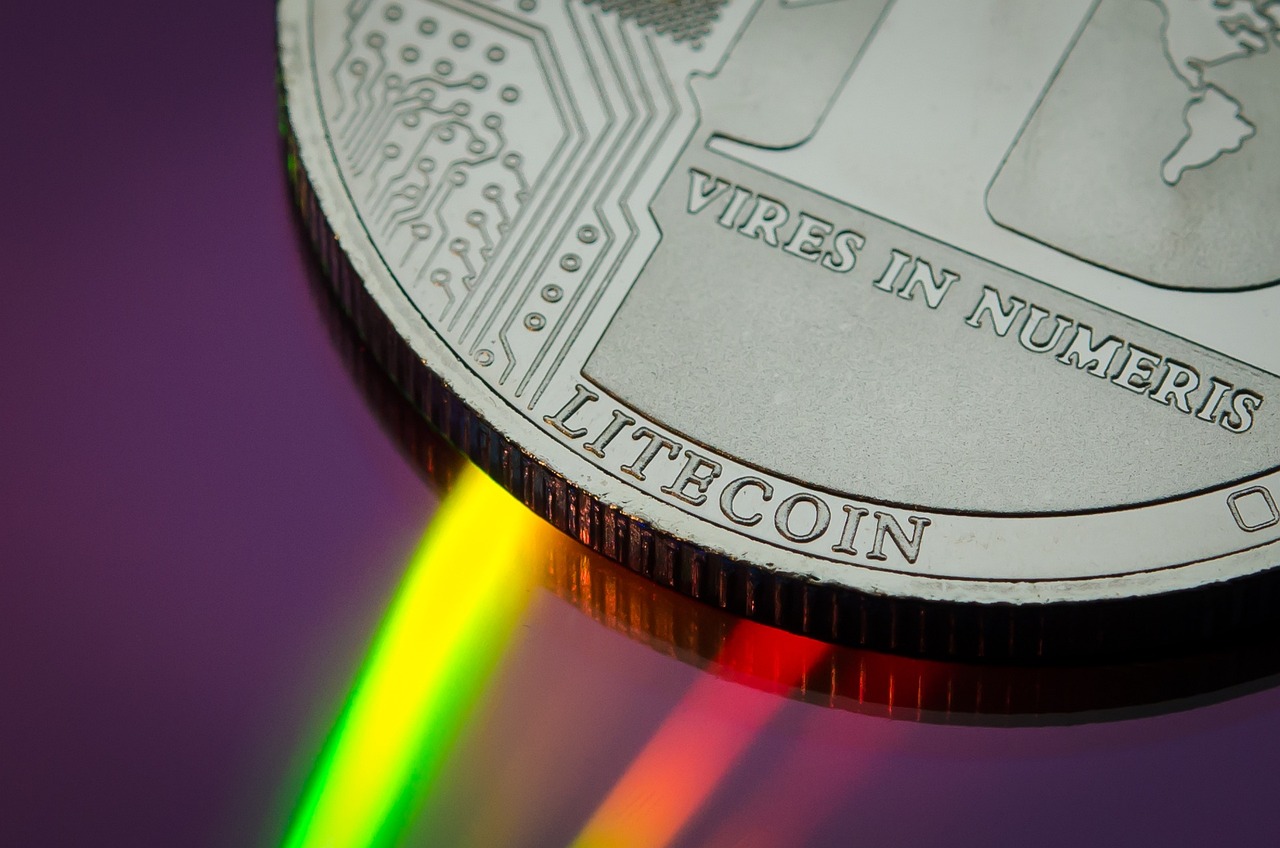SushiSwap - A Closer Look at Their Tokenomics
In the ever-evolving world of decentralized finance (DeFi), SushiSwap stands out as a unique player, not just for its sushi-themed branding but also for its innovative approach to tokenomics. This article delves into SushiSwap's tokenomics, exploring its structure, utility, and impact on the DeFi ecosystem. We will analyze its unique features and how they contribute to the platform's growth and sustainability, shedding light on why it's a favorite among DeFi enthusiasts.
SushiSwap operates on a dual-token model, which is essential for its functionality. The primary tokens in this ecosystem are SUSHI and ETH. While ETH serves as the backbone of the Ethereum blockchain, SUSHI plays a pivotal role in the governance and operational aspects of SushiSwap. This dual-token system facilitates liquidity provision and governance, allowing users to not only trade but also have a say in the platform's future. By holding SUSHI tokens, users can participate in governance decisions, making the platform a community-driven project.
SUSHI tokens are more than just a means of exchange; they are the lifeblood of the SushiSwap ecosystem. These tokens serve multiple purposes, including governance, staking, and incentivizing liquidity providers. Imagine SUSHI tokens as the keys to a treasure chest, where the treasure is the ability to influence the platform's direction and earn rewards. When users stake their SUSHI tokens, they not only contribute to the platform's stability but also earn rewards in return, creating a win-win situation. This incentivization model encourages users to provide liquidity, thereby enhancing the overall efficiency of the platform.
One of the standout features of SushiSwap is its governance mechanism, which empowers SUSHI token holders to influence the platform's future. This democratic process allows users to propose changes, vote on important decisions, and shape the direction of the project. It's like being part of a community where every voice matters. By participating in governance, token holders can propose upgrades, changes in fee structures, or even new features that benefit the entire community.
The distribution of voting power among SUSHI holders is crucial for maintaining a balanced and engaged community. Each SUSHI token represents a vote, meaning that the more tokens a user holds, the greater their influence in decision-making processes. This model encourages users to hold onto their tokens rather than sell them off, fostering a sense of commitment to the project's success. It’s a bit like a club where members with more contributions have a louder voice, ensuring that the community's best interests are represented.
The proposal process in SushiSwap is straightforward, designed to ensure transparency and inclusivity. Users can submit proposals for changes or new features, which are then reviewed by the community. After a proposal is submitted, a voting period follows, allowing all SUSHI holders to weigh in. This structure not only promotes democratic engagement but also ensures that the best ideas rise to the top, benefiting the entire ecosystem.
Staking SUSHI tokens is another exciting aspect of the platform. When users stake their tokens, they contribute to the liquidity and stability of the SushiSwap platform. In return, they earn rewards, which can be either in the form of additional SUSHI tokens or other incentives. This mechanism not only benefits the stakers but also enhances the overall liquidity of the platform, making it more attractive for new users. Think of it as planting a seed in a garden; the more you nurture it, the more it grows and flourishes, providing you with bountiful rewards.
Liquidity pools are a cornerstone of SushiSwap's functionality. These pools allow users to provide liquidity for various trading pairs, earning fees in the process. SushiSwap incentivizes liquidity providers by offering rewards, which can significantly boost their earnings. The more liquidity a user provides, the higher their potential returns. This model not only attracts liquidity but also enhances the trading experience for all users on the platform.
Yield farming is another attractive feature of SushiSwap, allowing users to maximize their returns by providing liquidity to different pools. By participating in yield farming, users can earn not just trading fees but also additional tokens as rewards. This process is akin to planting multiple crops in a field; the more diverse your crops, the better your harvest. With various yield farming options available, users can strategize to optimize their returns based on market conditions.
While the opportunities on SushiSwap are enticing, it’s essential to consider the risks involved. Liquidity provision and yield farming come with potential pitfalls, such as impermanent loss and market volatility. Users should conduct thorough research and consider their risk tolerance before diving in. Just like navigating through a stormy sea, being prepared and informed can make all the difference in ensuring a safe journey.
Looking ahead, the future of SushiSwap's tokenomics appears promising. As the DeFi space continues to evolve, SushiSwap is likely to implement changes based on community feedback and market trends. Innovations may include enhanced governance features, new staking options, or improved liquidity incentives. Staying attuned to these developments is crucial for users looking to maximize their engagement and returns on the platform. It’s like being on the frontier of a new world; the possibilities are endless, and being part of the journey is what makes it exciting.
- What is SushiSwap? - SushiSwap is a decentralized exchange (DEX) that allows users to trade cryptocurrencies directly without intermediaries.
- How do I earn rewards on SushiSwap? - Users can earn rewards by staking SUSHI tokens, providing liquidity to pools, and participating in yield farming.
- What are the risks associated with liquidity provision? - Risks include impermanent loss and market volatility, which can affect the returns on your investments.
- Can I participate in governance without holding SUSHI tokens? - No, only SUSHI token holders can participate in the governance process.

Understanding SushiSwap's Token Model
SushiSwap operates on a unique dual-token system that is designed to enhance liquidity provision and facilitate governance within the platform. At the heart of this system are the SUSHI and xSUSHI tokens, each playing a pivotal role in the ecosystem's functionality. The SUSHI token serves as the primary utility token, enabling users to engage in governance and earn rewards, while xSUSHI acts as a representation of staked SUSHI tokens, allowing holders to earn additional rewards over time.
The dual-token model is not just a gimmick; it is a strategic approach that aligns the interests of liquidity providers with those of the platform. By staking SUSHI tokens, users convert them into xSUSHI, which accrues rewards in the form of additional SUSHI tokens. This incentivizes users to hold their tokens long-term rather than engage in short-term trading, which can lead to price volatility. In essence, the more you stake, the more you earn, creating a win-win scenario for both the platform and its users.
Another fascinating aspect of SushiSwap's token model is its focus on community governance. SUSHI token holders are granted the power to vote on key decisions that affect the platform's future. This includes proposals for new features, changes to the protocol, and even the allocation of funds within the ecosystem. By decentralizing control, SushiSwap fosters a sense of ownership among its users, making them active participants in the platform's evolution.
To fully understand how this token model operates, let's break down its components in the following table:
| Token | Functionality | Benefits |
|---|---|---|
| SUSHI | Governance, staking, and rewards | Voting rights, liquidity incentives, and potential price appreciation |
| xSUSHI | Staked representation of SUSHI | Earns additional SUSHI rewards over time |
The interaction between these two tokens is crucial for maintaining the health of the SushiSwap ecosystem. By encouraging liquidity provision through rewards and governance participation, SushiSwap ensures that its platform remains robust and adaptable to the ever-changing landscape of decentralized finance (DeFi). This innovative token model not only boosts user engagement but also creates a sustainable environment for growth and development.
In conclusion, understanding SushiSwap's token model is essential for anyone looking to participate in its ecosystem. The dual-token system, with its focus on liquidity, governance, and rewards, positions SushiSwap as a competitive player in the DeFi space. As users continue to engage with the platform, the success of this model will undoubtedly influence the future of decentralized exchanges.

The Role of SUSHI Tokens
The SUSHI token is not just a piece of digital currency; it serves as the lifeblood of the SushiSwap ecosystem. Imagine it as the key that unlocks a treasure trove of opportunities within the platform. Its main functions revolve around governance, staking, and incentivizing liquidity providers, making it a multifaceted asset that plays a crucial role in the overall structure of SushiSwap.
First and foremost, governance is a significant aspect of what makes SUSHI tokens so valuable. Token holders can participate in the decision-making processes that shape the future of the platform. This means that if you hold SUSHI, you have a voice. You can propose changes, vote on important initiatives, and contribute to the evolution of SushiSwap. It’s like being part of a democratic society where every vote counts, and your opinion can directly influence the path the project takes.
Within the governance framework, SUSHI token holders can engage in various activities that allow them to steer the platform. The governance mechanisms are designed to be user-friendly, ensuring that even those new to the crypto space can participate. This is where the community aspect of SushiSwap shines. The collective input from SUSHI holders fosters a sense of ownership and responsibility among users, encouraging active participation and collaboration.
Now, let's talk about how voting power is distributed among SUSHI holders. Each token you hold grants you a certain amount of voting power, which plays a pivotal role in community engagement. The more SUSHI tokens you possess, the greater your influence in the governance process. However, this does not mean that larger holders dominate the conversation. SushiSwap has mechanisms in place to ensure that every voice matters, promoting a balanced approach to decision-making.
The proposal process is another exciting aspect of governance within SushiSwap. It’s a straightforward yet effective system that allows users to submit proposals for improvements or changes. Here’s a quick overview of how it works:
- Proposal Submission: Any SUSHI holder can draft and submit a proposal.
- Community Discussion: Proposals are open for community discussion, allowing for feedback and adjustments.
- Voting Period: Once discussions conclude, a voting period begins where SUSHI holders can cast their votes.
- Implementation: If a proposal receives enough votes, it is implemented into the platform.
This democratic approach ensures that the SushiSwap community remains engaged and invested in the platform's future. It’s like a town hall meeting where everyone is welcome to voice their opinions and contribute to the community's growth.
Beyond governance, SUSHI tokens are also used for staking, which allows users to earn rewards simply by holding their tokens. Staking is akin to planting a seed in a garden; with time and care, that seed can grow into a fruitful tree. When you stake your SUSHI tokens, you help provide liquidity to the platform while also earning a share of transaction fees and rewards. This not only benefits you as a holder but also strengthens the overall liquidity of SushiSwap, making it a win-win situation.
In summary, the role of SUSHI tokens is pivotal in creating a thriving ecosystem within SushiSwap. From governance to staking, these tokens empower users and enhance community engagement. As the platform continues to evolve, the importance of SUSHI tokens will only grow, solidifying their place as a cornerstone of the SushiSwap experience.
Q1: What are SUSHI tokens used for?
A1: SUSHI tokens are primarily used for governance, staking, and incentivizing liquidity providers on the SushiSwap platform.
Q2: How can I participate in governance with my SUSHI tokens?
A2: As a SUSHI holder, you can propose changes, vote on initiatives, and engage in community discussions to influence the platform's future.
Q3: What are the benefits of staking SUSHI tokens?
A3: Staking SUSHI tokens allows you to earn rewards, share in transaction fees, and contribute to the platform's liquidity.
Q4: Is there a risk involved in providing liquidity?
A4: Yes, providing liquidity can come with risks, including impermanent loss. It's essential to understand these risks before participating.

Governance Mechanisms
In the world of decentralized finance (DeFi), governance is the backbone that supports the community's voice and vision. SushiSwap's governance mechanisms are designed to empower its users, allowing them to actively participate in shaping the platform's future. At the heart of this system lies the SUSHI token, which serves as the primary tool for community engagement and decision-making.
SUSHI token holders are granted the ability to propose changes, vote on various initiatives, and influence the strategic direction of the platform. This democratic approach ensures that the SushiSwap ecosystem remains aligned with the interests of its users, rather than being dictated by a centralized authority. Imagine it as a town hall meeting where every resident has a say in the community's development; that's the essence of SushiSwap's governance.
To break it down further, the governance process can be encapsulated in a few key steps:
- Proposal Submission: Any SUSHI holder can submit a proposal for consideration. This could range from changes in protocol parameters to new features or incentives.
- Discussion Phase: Once a proposal is submitted, it enters a discussion phase where community members can provide feedback, express concerns, or suggest modifications.
- Voting: After the discussion period, the proposal is put to a vote. SUSHI holders can cast their votes based on their holdings, with each token representing a vote.
- Implementation: If a proposal passes, it is implemented, and the community can begin to reap the benefits of the changes.
This structured approach not only fosters transparency but also encourages active participation from the community. Furthermore, the distribution of voting power among SUSHI holders plays a critical role in ensuring that diverse opinions are represented. In this way, the governance model promotes a healthy ecosystem where innovation can flourish.
However, it's essential to consider the implications of voting power distribution. A highly concentrated ownership of SUSHI tokens can lead to a scenario where a few individuals or entities wield disproportionate influence over governance decisions. This could potentially stifle the voices of smaller holders and create an imbalance in the decision-making process. Therefore, SushiSwap continuously strives to engage its community and promote a more equitable distribution of tokens.
In summary, SushiSwap's governance mechanisms are a testament to its commitment to decentralization and community involvement. By enabling SUSHI holders to actively participate in the platform's development, SushiSwap not only enhances user engagement but also ensures that its evolution is guided by the collective wisdom of its community. This democratic ethos is what sets SushiSwap apart in the crowded DeFi landscape, making it a beacon for those who believe in the power of community-driven innovation.
Q1: How can I participate in SushiSwap's governance?
A1: You can participate by holding SUSHI tokens, which allow you to submit proposals and vote on community initiatives.
Q2: What happens if a proposal is rejected?
A2: If a proposal does not receive enough votes to pass, it will not be implemented. However, community members can revise and resubmit proposals based on feedback.
Q3: How does voting power work?
A3: Voting power is proportional to the number of SUSHI tokens you hold. More tokens mean more influence in governance decisions.
Q4: Can anyone submit a proposal?
A4: Yes, any holder of SUSHI tokens can submit a proposal, fostering an inclusive governance environment.

Voting Power Distribution
The distribution of voting power among SUSHI token holders is a crucial aspect of SushiSwap's governance model, shaping the platform's future and direction. At its core, the voting power is directly proportional to the number of SUSHI tokens a user holds. This means that the more tokens you possess, the greater your influence over important decisions, such as protocol upgrades, fee structures, and even the allocation of funds for various projects within the ecosystem. It's like having a larger voice in a community meeting; the more shares you own, the louder your voice.
However, this model can lead to a concentration of power among a few large holders, often referred to as "whales." These whales can sway votes significantly, potentially sidelining the interests of smaller holders. To balance this, SushiSwap employs mechanisms to encourage broader participation in governance. For instance, proposals can only be submitted by users who hold a minimum amount of SUSHI, ensuring that those who are invested in the platform have a say in its governance.
Moreover, the voting power distribution is designed to be transparent and accessible. Users can easily track how many tokens they hold and how that translates into voting power. This transparency fosters a sense of community and trust among participants, encouraging them to engage actively in the governance process. The underlying principle is simple: a well-informed community is more likely to contribute positively, making decisions that benefit the entire ecosystem.
To illustrate the voting power distribution further, consider the following table:
| Token Holder Type | Percentage of Total Voting Power | Influence Level |
|---|---|---|
| Whales (Top 10 Holders) | 40% | High |
| Mid-sized Holders (11-100 Holders) | 35% | Medium |
| Small Holders (101+ Holders) | 25% | Low |
This table highlights the disparity in voting power distribution. While whales dominate the voting landscape, mid-sized and small holders still play a vital role in shaping the future of SushiSwap. The goal is to create a balanced ecosystem where every voice matters, regardless of the number of tokens held. In essence, SushiSwap aims to cultivate a community-driven platform where decisions reflect the collective interests of all participants, not just the few with the most tokens.
In conclusion, understanding the voting power distribution within SushiSwap is essential for anyone looking to engage with the platform. It not only empowers users to make informed decisions but also fosters a culture of collaboration and transparency, ensuring that the governance process is as democratic as possible. As the DeFi landscape continues to evolve, the effectiveness of this governance model will be critical in maintaining SushiSwap's position as a leading player in the decentralized finance space.

Proposal Process
The proposal process within SushiSwap is a vital component of its governance model, allowing SUSHI token holders to actively participate in shaping the platform's future. This democratic approach ensures that the voices of the community are heard, fostering a sense of ownership and involvement. So, how does this process work? Let's break it down into manageable steps.
First and foremost, any SUSHI token holder can submit a proposal. This could range from changes in protocol parameters to introducing new features or even altering existing incentives. The idea is to encourage creativity and innovation among users, as they are often the ones most familiar with the platform's strengths and weaknesses. Once a proposal is drafted, it must meet certain criteria to ensure clarity and feasibility. This includes detailing the proposal's objective, potential impacts, and any necessary changes to the existing framework.
After submission, the proposal enters a discussion phase where community members can debate its merits and suggest modifications. This phase is crucial as it allows for collective brainstorming, helping to refine the proposal before it goes to a vote. Feedback from the community can lead to improved proposals that better serve the interests of all stakeholders.
Once the discussion period concludes, the proposal is put to a vote. Each SUSHI token holder's voting power is proportional to the number of tokens they hold, which means that larger holders have a greater influence on the outcome. However, this also encourages smaller holders to band together to ensure their voices are represented. The voting period typically lasts for a set duration, during which holders can cast their votes either in favor or against the proposal.
To give you a clearer picture, here's a simplified table outlining the proposal process:
| Step | Description |
|---|---|
| 1. Proposal Submission | Any SUSHI holder can submit a proposal detailing the changes they wish to see. |
| 2. Community Discussion | Members discuss the proposal, providing feedback and suggestions for improvement. |
| 3. Voting Period | The proposal is voted on by token holders, with voting power based on the number of tokens held. |
| 4. Implementation | If approved, the proposal is implemented, and changes are made to the protocol. |
Once the voting period concludes, the results are tallied, and if the proposal receives enough support, it is officially implemented. This final step is crucial as it transforms community ideas into actionable changes, ensuring that SushiSwap continues to evolve in line with user needs.
Overall, the proposal process embodies the spirit of decentralization and community governance that SushiSwap champions. It empowers users to take an active role in the platform's development, fostering a collaborative environment where innovation can thrive. So, if you're a SUSHI token holder, don't hesitate to get involved—your voice matters!
- What is the minimum requirement to submit a proposal? Any SUSHI token holder can submit a proposal, regardless of the number of tokens they hold.
- How long does the voting period last? The voting period typically lasts for a predetermined duration, which is communicated during the proposal phase.
- Can anyone participate in the discussion phase? Yes, the discussion phase is open to all community members, encouraging diverse input.
- What happens if a proposal is rejected? If a proposal is rejected, the community can continue to suggest improvements and resubmit it in the future.

Staking and Rewards
Staking in the SushiSwap ecosystem is not just a way to earn passive income; it's a gateway to becoming an integral part of the community. By locking up your SUSHI tokens, you not only contribute to the liquidity of the platform but also unlock a treasure trove of rewards. Imagine it like planting a seed in a garden; with the right care, that seed can flourish into a bountiful harvest. In the world of DeFi, staking is your way of nurturing that seed.
When you stake your SUSHI tokens, you're participating in a system that rewards you based on the amount you stake and the duration for which you stake it. The rewards come in various forms, primarily in the form of additional SUSHI tokens, which are distributed regularly. This creates a compounding effect, allowing your initial investment to grow over time. Think of it as earning interest on your savings account, but with the potential for much higher returns!
To give you a clearer picture, here’s how the staking process generally works:
| Step | Description |
|---|---|
| 1 | Connect your wallet to the SushiSwap platform. |
| 2 | Select the amount of SUSHI you wish to stake. |
| 3 | Confirm the transaction and start earning rewards! |
Moreover, the staking rewards are often influenced by the overall performance of the SushiSwap platform. As more users engage with the ecosystem, the rewards pool increases, which can lead to higher returns for stakers. This dynamic creates a symbiotic relationship between the platform and its users, fostering a sense of community and shared success.
However, it’s essential to consider the risks involved in staking. While the potential rewards can be enticing, factors such as market volatility and smart contract risks can affect your earnings. Therefore, it’s crucial to do your homework and understand the implications before diving in. Just like any investment, knowledge is your best ally.
In conclusion, staking on SushiSwap is a fantastic way to earn rewards while contributing to the platform's liquidity. It’s a win-win situation where you can grow your assets and be part of an innovative community. So, if you're looking to dive into the DeFi space, consider staking your SUSHI tokens and watch your investment blossom!
- What is staking? Staking involves locking up your tokens to support the network's operations in exchange for rewards.
- How do I stake my SUSHI tokens? You can stake your tokens directly on the SushiSwap platform by connecting your wallet and selecting the amount you wish to stake.
- What are the risks associated with staking? Risks include market volatility and potential smart contract vulnerabilities, so it’s essential to research before staking.
- Can I unstake my tokens at any time? Yes, you can generally unstake your tokens, but be aware of any potential waiting periods or fees.

Liquidity Pools and Incentives
In the vibrant world of decentralized finance (DeFi), liquidity pools serve as the backbone of trading activities on platforms like SushiSwap. These pools are essentially collections of funds that are locked into smart contracts, allowing users to trade tokens without the need for a traditional order book. The beauty of liquidity pools lies in their ability to facilitate seamless transactions while providing significant rewards to those who contribute to them. By participating in these pools, liquidity providers not only help maintain the platform's functionality but also earn a share of the transaction fees generated from trades, creating a win-win scenario.
SushiSwap offers a variety of liquidity pools, each tailored to different trading pairs and user needs. When users supply liquidity to these pools, they receive liquidity provider (LP) tokens in return, which represent their share of the pool. These tokens can be staked to earn additional rewards, such as SUSHI tokens, further incentivizing users to contribute their assets. The more liquidity a user provides, the more they stand to earn, creating a competitive environment that encourages participation.
The incentives for liquidity providers are not just limited to transaction fees. SushiSwap has implemented a robust reward system designed to attract and retain liquidity. For instance, users can participate in yield farming, where they stake their LP tokens in various pools to earn even more rewards. This mechanism not only enhances liquidity but also allows users to maximize their returns. To give you a clearer picture, here's a snapshot of some of the liquidity pools available on SushiSwap:
| Liquidity Pool | Token Pair | Annual Percentage Yield (APY) |
|---|---|---|
| ETH-SUSHI | Ethereum - SUSHI | 20% - 30% |
| USDC-SUSHI | USD Coin - SUSHI | 15% - 25% |
| DAI-SUSHI | Dai - SUSHI | 18% - 28% |
As you can see from the table, the potential returns can be quite enticing, especially when compared to traditional financial instruments. However, it's crucial to understand that with great rewards come certain risks. Market volatility, impermanent loss, and smart contract vulnerabilities are all factors that liquidity providers must consider. SushiSwap has taken steps to mitigate these risks by implementing robust security measures and continuously updating their protocols based on community feedback.
In conclusion, liquidity pools on SushiSwap not only enhance the platform's trading capabilities but also offer lucrative incentives for users willing to contribute their assets. By understanding the dynamics of these pools and the associated risks, users can make informed decisions that align with their financial goals. The ecosystem thrives on collaboration and shared benefits, making it an exciting space for both new and seasoned investors.
- What are liquidity pools? Liquidity pools are collections of funds locked in smart contracts that facilitate trading on decentralized exchanges.
- How do I earn rewards as a liquidity provider? By supplying assets to a liquidity pool, you earn a share of transaction fees and can stake LP tokens for additional rewards.
- What is yield farming? Yield farming is the practice of staking LP tokens in various pools to earn more rewards, often in the form of native tokens like SUSHI.
- What risks are involved with liquidity provision? Risks include market volatility, impermanent loss, and potential vulnerabilities in smart contracts.

Yield Farming Opportunities
When it comes to maximizing your returns in the decentralized finance (DeFi) space, yield farming on SushiSwap is like finding a hidden treasure chest in a vast ocean. It’s not just about providing liquidity; it’s about strategically positioning yourself to earn the highest possible rewards. Yield farming allows users to lend their assets in exchange for SUSHI tokens, which can significantly boost your earnings over time. But how does it work? Let’s dive deeper!
SushiSwap offers a variety of liquidity pools where users can deposit their tokens to earn rewards. These pools are the lifeblood of the platform, enabling seamless trading and providing liquidity for all transactions. Each pool has its own unique incentives, which can vary based on market demand and the specific tokens involved. For example, some pools might offer higher yields during promotional periods to attract more liquidity providers. This means that by choosing the right pool, you can significantly enhance your earning potential.
To give you a clearer picture, here’s a simplified table that outlines some of the popular liquidity pools available on SushiSwap:
| Liquidity Pool | Tokens Involved | APY (Annual Percentage Yield) |
|---|---|---|
| ETH/SUSHI | Ethereum (ETH) and SUSHI | 15% - 25% |
| USDC/SUSHI | USD Coin (USDC) and SUSHI | 10% - 20% |
| DAI/SUSHI | DAI and SUSHI | 12% - 22% |
As you can see, the potential returns can be quite attractive! However, it’s essential to remember that yield farming comes with its own set of risks. Market volatility can lead to impermanent loss, which occurs when the price of your deposited tokens fluctuates significantly. This means that while you might earn rewards, the value of your assets could decrease compared to simply holding them. Therefore, it’s crucial to do your research and understand the dynamics of the pools you’re participating in.
Moreover, SushiSwap offers additional incentives through its SUSHI rewards. By holding and staking SUSHI tokens, users can earn even more rewards, creating a compounding effect that can lead to substantial gains over time. It’s like planting a seed and watching it grow into a fruitful tree, providing you with a steady stream of income.
In conclusion, yield farming on SushiSwap can be a highly rewarding venture for those willing to navigate its complexities. By carefully selecting liquidity pools and understanding the associated risks, you can unlock the full potential of your crypto assets. So, are you ready to dive in and start farming?
- What is yield farming? Yield farming is the process of lending your crypto assets to earn rewards, often in the form of additional tokens.
- How do I start yield farming on SushiSwap? To start yield farming, you need to connect your wallet, choose a liquidity pool, and deposit your tokens.
- What are the risks involved? The primary risks include impermanent loss and market volatility, which can affect the value of your assets.
- Can I lose my investment? Yes, there is always a risk of losing your investment, especially in volatile markets.

Risk Factors and Considerations
When diving into the world of liquidity provision and yield farming on SushiSwap, it's crucial to acknowledge the risk factors that come along with these opportunities. While the potential for high returns can be enticing, the landscape is fraught with uncertainties that can impact your investment. One of the primary risks is impermanent loss, a phenomenon that occurs when the price of the tokens you provide to a liquidity pool diverges significantly. This can lead to a situation where, if you withdraw your tokens, you might end up with less value than if you had simply held onto them.
Additionally, smart contract vulnerabilities pose a significant threat. SushiSwap, like many DeFi platforms, relies on complex smart contracts to facilitate transactions and manage liquidity. If these contracts contain bugs or are exploited by malicious actors, users can face substantial losses. It's essential to conduct thorough research and ensure that you are comfortable with the risks associated with any smart contract you engage with.
Moreover, the overall volatility of the cryptocurrency market can amplify these risks. Prices can swing dramatically within short periods, meaning that even a well-planned investment can turn sour quickly. As a participant in the DeFi space, you should be prepared for market fluctuations and have a strategy in place to manage your investments effectively.
Another important consideration is regulatory risk. As governments worldwide begin to scrutinize DeFi platforms more closely, there is always the chance that new regulations could impact how SushiSwap operates. This could affect everything from liquidity provision to the trading of SUSHI tokens. Staying informed about regulatory developments is crucial for anyone actively participating in the DeFi ecosystem.
To help you navigate these risks, here are some best practices to consider:
- Do thorough research on the pools and tokens you plan to invest in.
- Consider diversifying your investments to spread risk.
- Stay updated on market trends and regulatory news.
- Use only funds that you can afford to lose.
By being aware of these risk factors and implementing sound strategies, you can enhance your experience on SushiSwap while minimizing potential downsides. The key is to remain vigilant, informed, and adaptable in this ever-evolving landscape.
Q: What is impermanent loss?
A: Impermanent loss refers to the temporary loss of funds that occurs when providing liquidity to a decentralized exchange due to price fluctuations of the tokens in the pool.
Q: How can I mitigate the risks associated with yield farming?
A: To mitigate risks, you can diversify your investments, research thoroughly, and only invest what you can afford to lose.
Q: Are there any security measures in place for SushiSwap?
A: SushiSwap employs various security measures, including audits of smart contracts, but users should always remain cautious and conduct their own research.

Future Developments in SushiSwap Tokenomics
As the decentralized finance (DeFi) landscape continues to evolve, SushiSwap is poised to adapt and enhance its tokenomics to meet the growing demands of its community and the broader market. One of the most exciting prospects for the future is the potential for dynamic tokenomics, which could allow for adjustments based on real-time market conditions and user engagement. This flexibility could help SushiSwap remain competitive and relevant in an ever-changing environment.
Another area of focus is the integration of layer-2 solutions. By leveraging these technologies, SushiSwap could significantly improve transaction speeds and reduce fees, making it more accessible for users. Imagine a bustling marketplace where transactions happen in the blink of an eye—this is the potential future of SushiSwap as it embraces layer-2 scaling solutions. The community is buzzing with anticipation about how these changes could enhance the user experience and drive even more liquidity to the platform.
Furthermore, SushiSwap is likely to explore partnerships and integrations with other DeFi protocols. These collaborations could lead to innovative features that enhance the utility of SUSHI tokens. For example, by integrating with lending platforms, SushiSwap could offer users the ability to earn interest on their staked tokens, creating a synergistic ecosystem that benefits all parties involved. The possibilities are endless, and the community is eager to see what the future holds.
In addition to these advancements, community feedback will play a crucial role in shaping SushiSwap's tokenomics. The platform has always prided itself on its democratic governance model, where SUSHI holders can propose and vote on changes. This participatory approach not only empowers users but also fosters a sense of ownership and responsibility within the community. As we look ahead, we can expect even more initiatives aimed at enhancing community engagement and ensuring that the platform evolves in a direction that aligns with user interests.
Moreover, educational initiatives will likely become a priority. As the DeFi space can be daunting for newcomers, SushiSwap may implement programs to educate users about the intricacies of tokenomics, liquidity provision, and yield farming. By demystifying these concepts, SushiSwap can attract a broader audience, ultimately contributing to its growth and sustainability.
In conclusion, the future of SushiSwap's tokenomics appears bright, filled with opportunities for innovation and community involvement. As the platform continues to evolve, it will be fascinating to watch how these developments unfold and how they shape the overall DeFi ecosystem.
- What are the key features of SushiSwap's tokenomics? SushiSwap employs a dual-token system with SUSHI tokens for governance and rewards, facilitating community engagement and liquidity provision.
- How can I participate in SushiSwap's governance? SUSHI token holders can submit proposals and vote on changes, influencing the platform's future direction.
- What are the risks associated with liquidity provision? Risks include impermanent loss and market volatility, but users can mitigate these through careful strategy and diversification.
- Are there any upcoming features for SushiSwap? Future developments may include dynamic tokenomics, layer-2 solutions, and enhanced educational initiatives to support users.
Frequently Asked Questions
- What is SushiSwap's tokenomics model?
SushiSwap operates on a unique dual-token system, consisting of the SUSHI token and the xSUSHI token. This model is designed to facilitate both liquidity provision and governance, allowing users to actively participate in the platform's ecosystem.
- How do SUSHI tokens function within the ecosystem?
SUSHI tokens are essential for governance, staking, and incentivizing liquidity providers. By holding SUSHI, users can vote on proposals that shape the future of SushiSwap and earn rewards through staking, which enhances their overall experience and returns.
- What are the governance mechanisms in place for SUSHI token holders?
SUSHI token holders can participate in decision-making by voting on proposals. This democratic process allows the community to influence the direction of SushiSwap, ensuring that it aligns with the interests of its users.
- How is voting power distributed among SUSHI holders?
The voting power in SushiSwap is directly proportional to the amount of SUSHI tokens held. This distribution encourages community engagement, as larger holders have more influence, but it also allows smaller holders to participate in governance through collective voting.
- What is the proposal process for SUSHI governance?
The proposal process is straightforward: users can submit proposals that are then voted on by SUSHI holders. This process promotes transparency and ensures that all voices within the community can be heard.
- How does staking work with SUSHI tokens?
Staking SUSHI tokens allows users to earn rewards over time. When users stake their tokens, they receive xSUSHI in return, which accrues value as the platform generates fees, providing a passive income opportunity.
- What types of liquidity pools are available on SushiSwap?
SushiSwap offers a variety of liquidity pools where users can provide liquidity for different token pairs. These pools come with incentives, such as earning a share of transaction fees, making them attractive for liquidity providers.
- What are yield farming opportunities on SushiSwap?
Yield farming on SushiSwap allows users to maximize their returns by providing liquidity to specific pools. By doing so, they can earn additional rewards in the form of SUSHI tokens, enhancing their overall yield.
- What risks should I consider when providing liquidity?
While providing liquidity can be lucrative, there are risks involved, such as impermanent loss and market volatility. It's crucial to do thorough research and consider these factors before diving in.
- What future developments can we expect in SushiSwap's tokenomics?
As the DeFi landscape evolves, SushiSwap is likely to implement new features and improvements based on community feedback and market trends. Keeping an eye on updates will help users stay informed about potential changes that could enhance their experience.



















